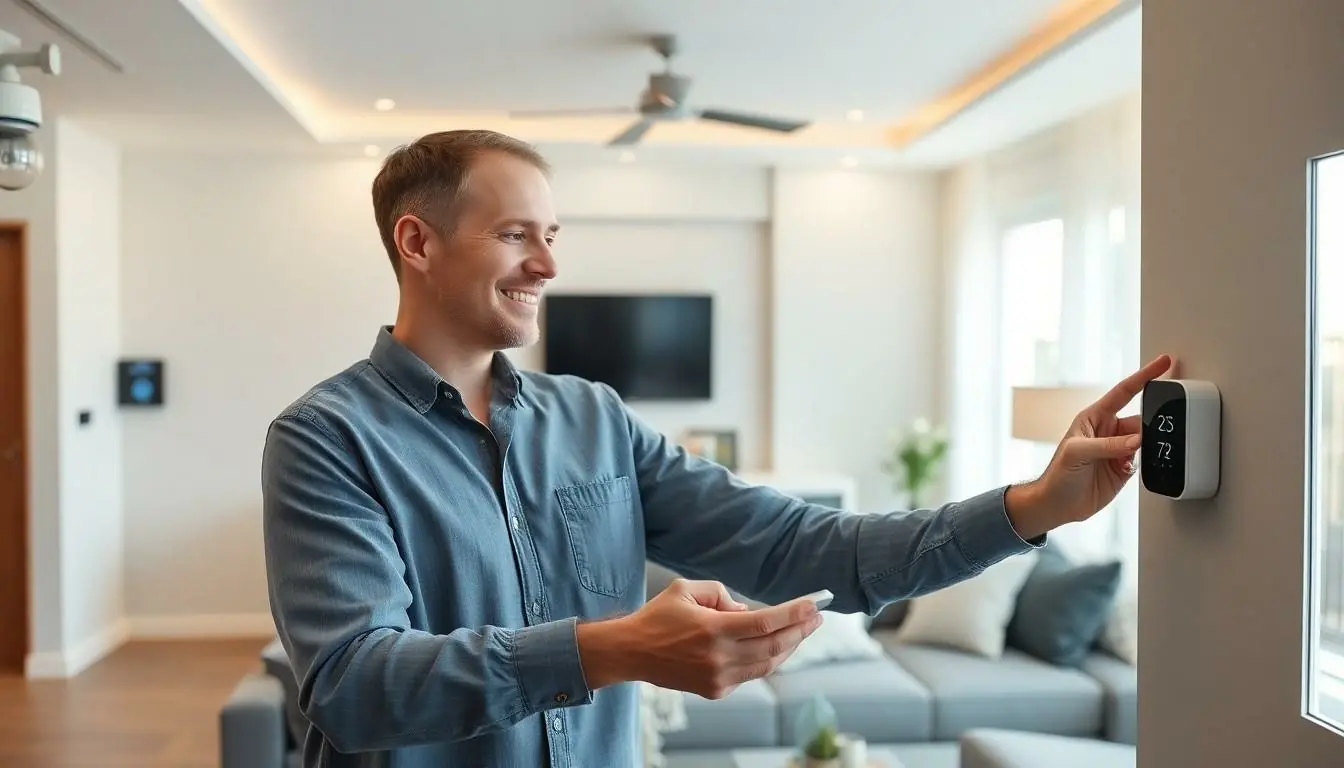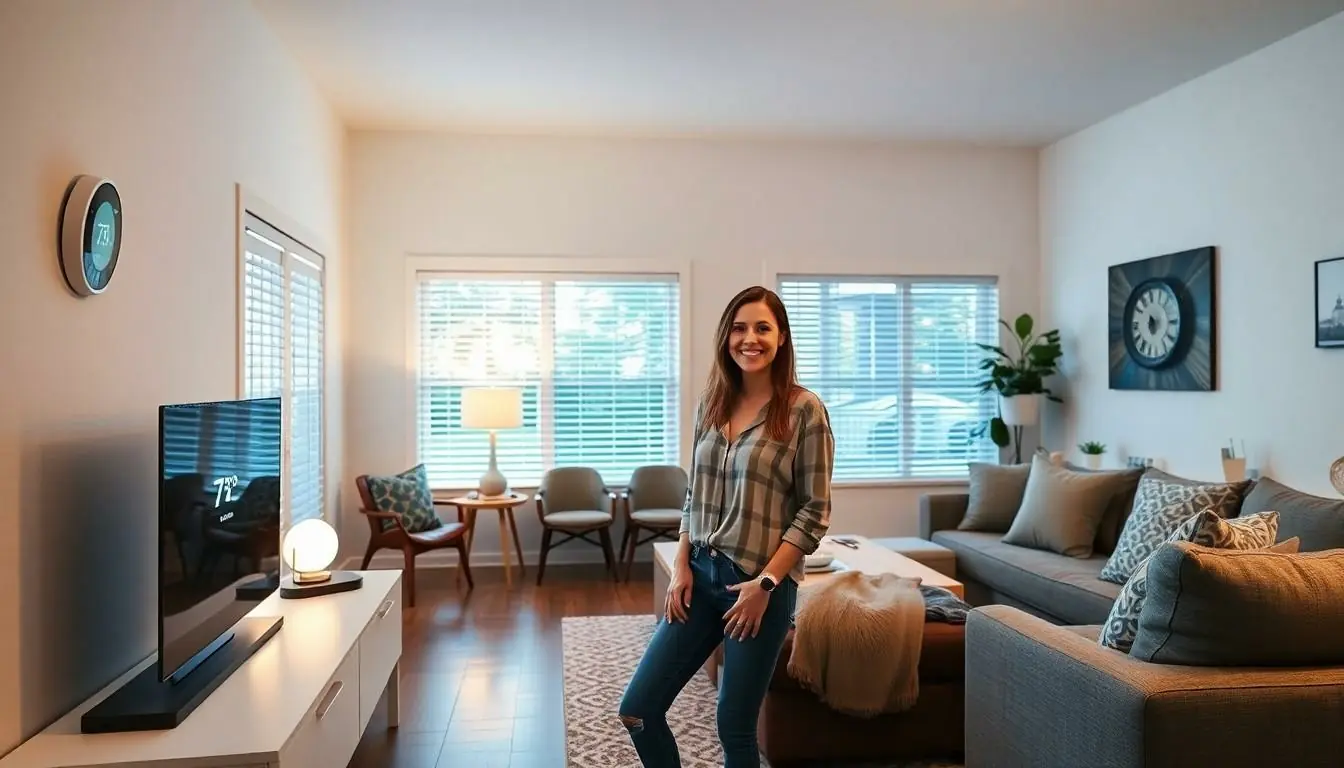Imagine walking into your home and having it greet you like an old friend—lights flick on, the thermostat adjusts, and your favorite playlist starts playing. Smart home renovations aren’t just a trend; they’re the key to transforming a house into a tech-savvy sanctuary. With the right upgrades, homeowners can boost convenience, energy efficiency, and even the value of their property.
Table of Contents
ToggleOverview of Smart Home Renovations
Smart home renovations integrate technology to enhance everyday living. Homeowners gain control over lighting, security, and climate through these upgrades. Enhanced comfort often results from automated systems adjusting to individual preferences. Energy efficiency plays a significant role, as smart devices optimize consumption leading to lower utility costs.
Upgrading to smart systems can also increase property values. Features such as programmable thermostats or smart security cameras attract potential buyers. A recent study by the National Association of Realtors indicated that 70% of homebuyers prefer homes equipped with smart technology.
In addition, convenience comes from remote access and control capabilities. Homeowners manage devices from smartphones or tablets, making it easy to oversee home functions. Security systems send alerts to users, allowing quick responses to incidents, providing peace of mind even when away.
Smart renovations encompass various applications. Lighting solutions include smart bulbs that adjust brightness and color. Automated blinds offer privacy and energy savings while maintaining an aesthetic appeal. Smart appliances, like refrigerators and washing machines, streamline daily tasks and contribute to efficiency.
Overall, implementing smart home technologies facilitates a seamless living experience. These renovations not only improve functionality but also enhance lifestyle through innovation. As technology advances, homeowners can expect more integration and convenience in their living spaces.
Benefits of Smart Home Renovations

Smart home renovations offer compelling benefits that significantly improve everyday living. Homeowners experience added convenience and efficiency, transforming their spaces into dynamic environments.
Increased Energy Efficiency
Energy efficiency becomes a priority with smart home technology. Automated systems adjust to optimal settings based on usage patterns, ensuring efficient energy consumption. Programmable thermostats can lower heating costs by up to 10% when fine-tuned according to daily schedules. Notably, smart appliances consume less energy, further decreasing utility bills. Communities benefit as well; widespread adoption of these devices lessens demand on power grids. The Department of Energy emphasizes energy savings, noting that smart homes often outperform traditional homes in energy efficiency by 20-30%. Overall, these technologies lead to smarter energy habits benefiting both homeowners and the environment.
Enhanced Security Features
Enhanced security features provide peace of mind for homeowners. Smart security systems include cameras and alarms that can be monitored remotely, allowing for immediate responses to potential threats. Motion sensors alert homeowners of any unusual activity, increasing proactive measures. Furthermore, programmable door locks enable users to control entry remotely, offering secure access for guests without needing physical keys. The incorporation of smart lighting can deter intruders by simulating occupancy during absences. Research indicates that homes with smart security features experience a 20% decrease in break-ins. These advancements fundamentally alter how homeowners engage with security, prioritizing safety and convenience through technology.
Popular Smart Home Technologies
Smart home renovations incorporate various technologies, enhancing convenience and efficiency. Here are key technologies homeowners often choose.
Smart Thermostats
Smart thermostats help manage energy use effectively. They learn user preferences, adjusting heating and cooling automatically. Programmable features allow users to set schedules for different times, reducing energy costs by up to 10%. The Department of Energy emphasizes these thermostats can outperform traditional methods. Homeowners benefit from the ability to control settings remotely through smartphones, ensuring comfort while conserving resources.
Smart Lighting Systems
Smart lighting systems transform how occupants interact with their environment. Adjustable brightness and color settings allow customization for mood or tasks. Automated features enable schedules or motion sensors to control lights, promoting energy efficiency. Studies show that homeowners can reduce electricity bills by up to 20% with smart lighting. Integration with voice assistants simplifies operation, making daily routines more seamless and enjoyable.
Home Automation Hubs
Home automation hubs act as the central control point for connected devices. These hubs streamline communication between various smart technologies, enabling integrated home management. Users can connect security cameras, lights, and thermostats through one interface, enhancing convenience significantly. Voice control options offer an intuitive way to interact with systems. Compatibility with multiple devices ensures extensive customization to fit individual needs, enhancing the overall smart home experience.
Steps for Planning a Smart Home Renovation
Effective planning is crucial for a successful smart home renovation. Homeowners should consider their current layout and how integrations can enhance functionality.
Assessing Your Current Space
Evaluating the existing space helps identify opportunities for smart upgrades. Prioritize areas that require the most improvement, such as lighting, security, and climate control. Examine electrical systems and connectivity options for compatibility with smart devices. Determine specific needs and preferences to tailor the renovation effectively. Each family member may value different features, so gather input to ensure a comprehensive approach. Noting potential obstacles, like structural limitations or existing technology, informs the renovation process in advance.
Budgeting for Upgrades
A well-defined budget streamlines the renovation process and avoids surprises. Allocate funds for both hardware and installation costs. Research the total expenses relevant to specific technologies, since smart thermostats can reduce energy costs by up to 10%. Choose devices that offer high return on investment, like security systems that decrease break-ins by 20%. Plan for future expenses, too, such as ongoing subscriptions for services. Prioritize spending based on immediate needs; foundational upgrades can significantly enhance efficiency and appeal.
Smart home renovations offer an exciting opportunity to elevate everyday living. By integrating technology into the home, homeowners can enjoy enhanced convenience, energy efficiency, and improved security. These upgrades not only make life easier but also add significant value to the property.
As technology continues to evolve, the potential for smarter living spaces will only expand. With careful planning and consideration of individual needs, homeowners can create a seamless environment that caters to their lifestyles. Embracing smart home innovations ensures a future-ready home that balances comfort and efficiency while appealing to prospective buyers.




